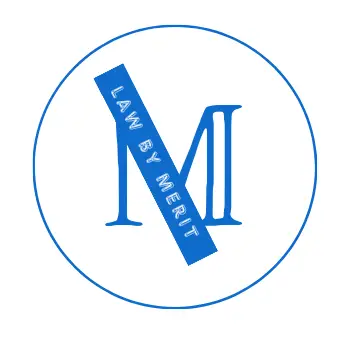When it comes to understanding your income, taxes, and financial responsibilities, two crucial documents come into play: the W-2 form and the tax return. These documents are integral components of the tax-filing process in the United States. In this comprehensive overview, we will delve into the key differences between the W-2 form and the tax return, highlighting their purposes, contents, and significance.
W-2 Form: Understanding Your Earnings
The W-2 form, also known as the Wage and Tax Statement, is a document provided by employers to their employees at the end of each calendar year. This form outlines the employee’s total earnings and the amount of taxes withheld from their paychecks throughout the year. It is a critical document for individuals to accurately report their income and taxes when filing their tax returns.
The W-2 form comprises various sections, including personal information, employer details, and earnings. It provides a breakdown of taxable wages, federal and state income tax withheld, Social Security and Medicare taxes, and other deductions such as retirement contributions. Employers are required to send the W-2 form to employees by January 31st, allowing ample time for individuals to prepare and file their tax returns.
Tax Return: Summarizing Your Financial Situation
A tax return is the comprehensive document submitted to the Internal Revenue Service (IRS) that details an individual’s or business’s financial activities for a specific tax year. Unlike the W-2 form, which primarily focuses on income and withholding, the tax return offers a comprehensive overview of an individual’s financial situation, including sources of income, deductions, credits, and tax liability.
The tax return is divided into several sections, each addressing different aspects of a person’s financial life. These sections include income, adjustments to income, deductions, credits, and the final calculation of taxes owed or refund due. It’s essential to accurately complete your tax return, as any errors or discrepancies can lead to audits or penalties.
W-2 vs. Tax Return: What Are The Difference Between W2 And Tax Return?
When it comes to the intricacies of the American tax system, two critical documents play a central role: the W-2 form and the tax return. These documents serve distinct purposes, yet they are often intertwined in the process of calculating and filing an individual’s taxes. In this overview, we will delve into the differences between the W-2 form and the tax return, highlighting their significance, components, and roles in the taxation landscape.
1. Purpose and Function:
W-2 Form:
The W-2 form, also known as the Wage and Tax Statement, is provided by employers to their employees at the end of each tax year. It outlines the employee’s earnings and tax withholdings for the year, including federal, state, and local taxes, Social Security, and Medicare contributions. Its primary purpose is to provide employees with the information they need to accurately fill out their tax returns.
Tax Return:
The tax return, on the other hand, is the document individuals submit to the Internal Revenue Service (IRS) to report their annual income and calculate the amount of taxes owed or refunds due. It encompasses a broader view of an individual’s financial situation, including income from various sources, deductions, credits, and adjustments. The tax return serves as the formal declaration of an individual’s financial status for the tax year.
2. Components
W-2 Form:
The W-2 form consists of various sections that provide a breakdown of an employee’s compensation and tax withholdings. These sections typically include:
1. Personal Information: Employee’s name, address, and Social Security number.
2. Earnings: Details of wages, tips, and other compensation received from the employer.
3. Tax Withholdings: Amounts deducted for federal, state, and local taxes, as well as Social Security and Medicare contributions.
4. Employer Contributions: Information on employer contributions to retirement plans or other benefits.
5. Year-to-Date Totals: A summary of the employee’s earnings and withholdings for the entire tax year.
Tax Return:
A tax return consists of various forms, schedules, and worksheets that provide a comprehensive view of an individual’s financial situation. These components include:
1. Form 1040: The main form used to report income, deductions, and tax liability.
2. Schedules: Additional forms that address specific types of income, deductions, and credits, such as Schedule A (itemized deductions) or Schedule C (self-employment income).
3. Income Sources: Reporting of income from various sources, including wages, self-employment, investments, rental properties, and more.
4. Deductions and Credits: Deductions such as student loan interest or mortgage interest, as well as tax credits like the Child Tax Credit or Earned Income Tax Credit.
5. Adjustments: Certain adjustments that reduce an individual’s taxable income, such as contributions to retirement accounts or Health Savings Accounts (HSAs).
3. Preparation and Distribution
W-2 Form:
Employers are responsible for preparing and distributing W-2 forms to their employees by January 31st of each year. Employees use the information provided on the W-2 form to accurately complete their tax returns.
Tax Return:
Taxpayers are responsible for preparing their own tax returns, either manually or with the assistance of tax software or a tax professional. Tax returns are typically due by April 15th, although this date may vary based on certain circumstances.
4. Taxable Income Reporting
W-2 Form:
The W-2 form reports an employee’s taxable wages and compensation earned throughout the tax year. It includes wages subject to federal income tax, Social Security tax, and Medicare tax.
Tax Return:
The tax return provides a comprehensive overview of an individual’s taxable income, including wages reported on the W-2 form as well as income from other sources such as investments, rental properties, and self-employment. It calculates the total taxable income after considering allowable deductions and adjustments.
5. Interaction and Reconciliation
W-2 Form:
The W-2 form serves as a starting point for individuals to gather essential information for their tax returns. The information provided on the W-2 form, such as income and tax withholdings, must be accurately reported on the tax return.
Tax Return:
The tax return takes the information from the W-2 form as well as other sources of income and deductions to calculate the final tax liability or refund. It reconciles the information from various documents to determine whether an individual has overpaid or underpaid taxes throughout the year.
In conclusion, the W-2 form and the tax return are distinct yet interrelated components of the American tax system. The W-2 form provides a snapshot of an employee’s income and tax withholdings, while the tax return offers a comprehensive view of an individual’s financial situation, including various sources of income, deductions, and credits. Understanding the differences and roles of these documents is crucial for individuals to accurately fulfill their tax obligations and navigate the complexities of the tax landscape.
FAQs About W-2 and Tax Returns
As we explore the differences between W-2 forms and tax returns, several common questions arise. Here are five frequently asked questions that provide further insight into these essential aspects of the American tax system:
1. What if I receive multiple W-2 forms from different employers?
If you have worked for more than one employer during the tax year, you will likely receive a W-2 form from each employer. It’s essential to gather all your W-2 forms and accurately report the information from each form on your tax return. Each W-2 form will detail the wages you earned and the taxes withheld from that specific employer. Failing to include any W-2 form could lead to discrepancies in your reported income, which might trigger an IRS audit or delay your tax refund.
2. Can I file my tax return without a W-2 form?
While you may have a general idea of your earnings, it’s strongly recommended not to file your tax return without your W-2 form. Employers are required to submit copies of W-2 forms to the IRS, and any discrepancies between your reported income and the information on your W-2 form could raise red flags. If you haven’t received your W-2 form by the end of January, contact your employer to request a duplicate copy. If you still don’t receive it, you can use Form 4852 to estimate your earnings and taxes withheld, but you should strive to obtain the accurate W-2 form as soon as possible.
3. How do tax deductions and credits factor into my tax return?
Tax deductions and credits play a significant role in reducing your overall tax liability or potentially increasing your tax refund. Deductions, such as those for student loan interest or medical expenses, lower your taxable income. Tax credits, like the Child Tax Credit or the American Opportunity Credit, directly reduce the amount of tax you owe. When completing your tax return, you’ll have the option to choose between itemizing deductions or taking the standard deduction, depending on which results in a more favorable outcome for you.
4. What happens if I make an error on my tax return?
Making errors on your tax return is not uncommon, and the IRS provides avenues for correcting these mistakes. If you discover an error after filing, you can file an amended tax return using Form 1040X. This form allows you to make corrections to your income, deductions, credits, or filing status. It’s important to note that you generally have three years from the date you filed your original return (or within two years of paying the tax, if that’s later) to file an amended return. Additionally, if the IRS detects errors on your return, they may contact you to request additional information or clarify discrepancies.
5. How do I know if I need to file a tax return?
Whether or not you need to file a tax return depends on several factors, including your filing status, age, income level, and sources of income. Generally, if your income exceeds a certain threshold, you are required to file a tax return. The income thresholds vary based on your filing status (single, married filing jointly, head of household, etc.) and whether you are claimed as a dependent on someone else’s return. Even if you don’t meet the filing requirements, there might be benefits to filing a return, such as claiming a refund for taxes withheld from your paycheck.
Last updated on: April 26, 2024




